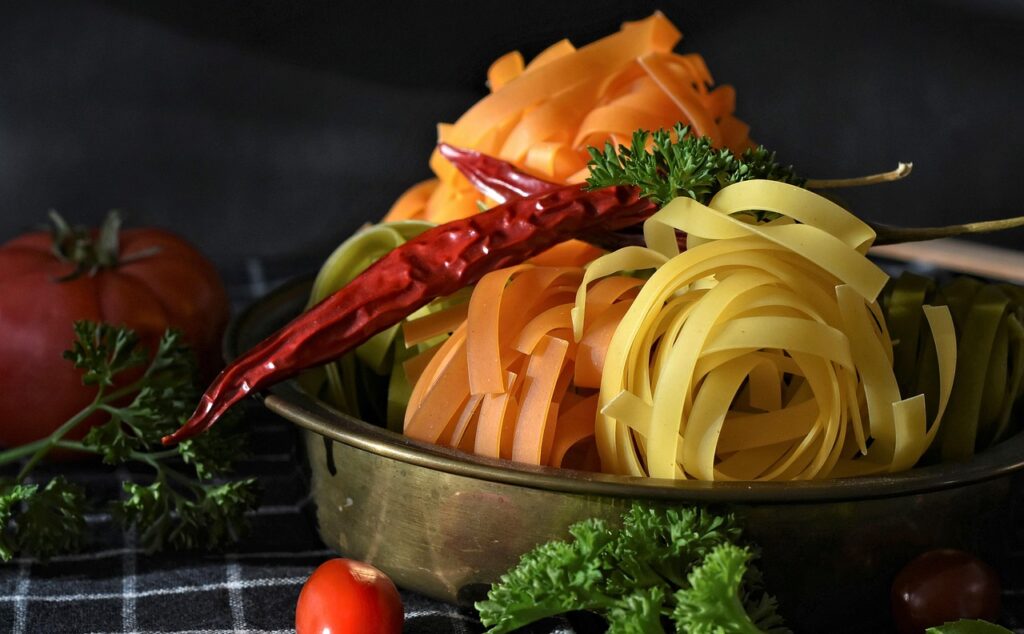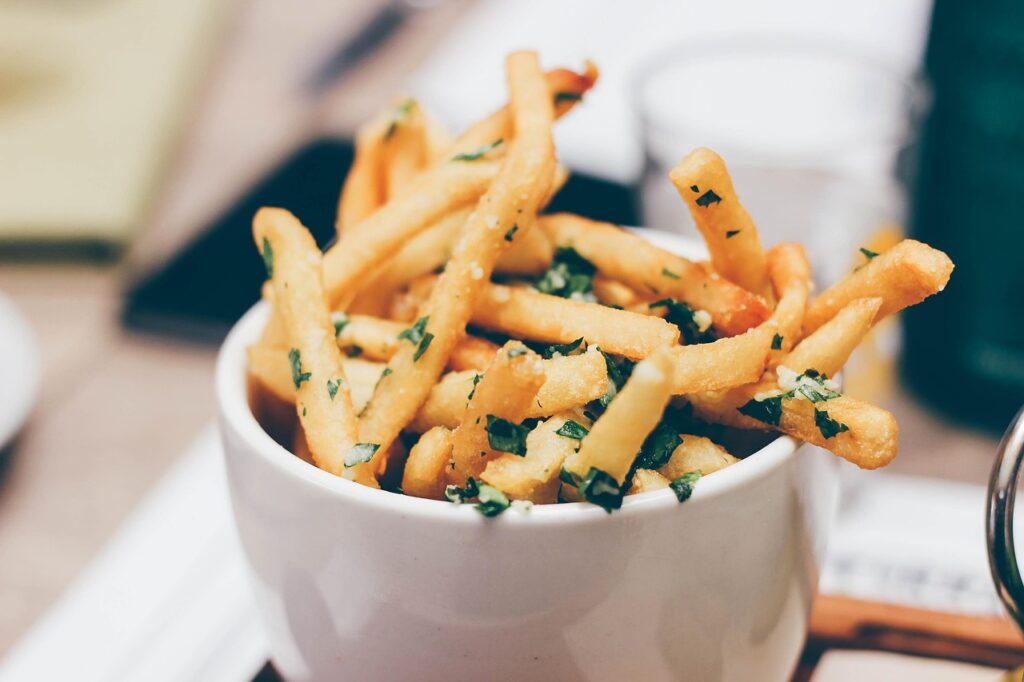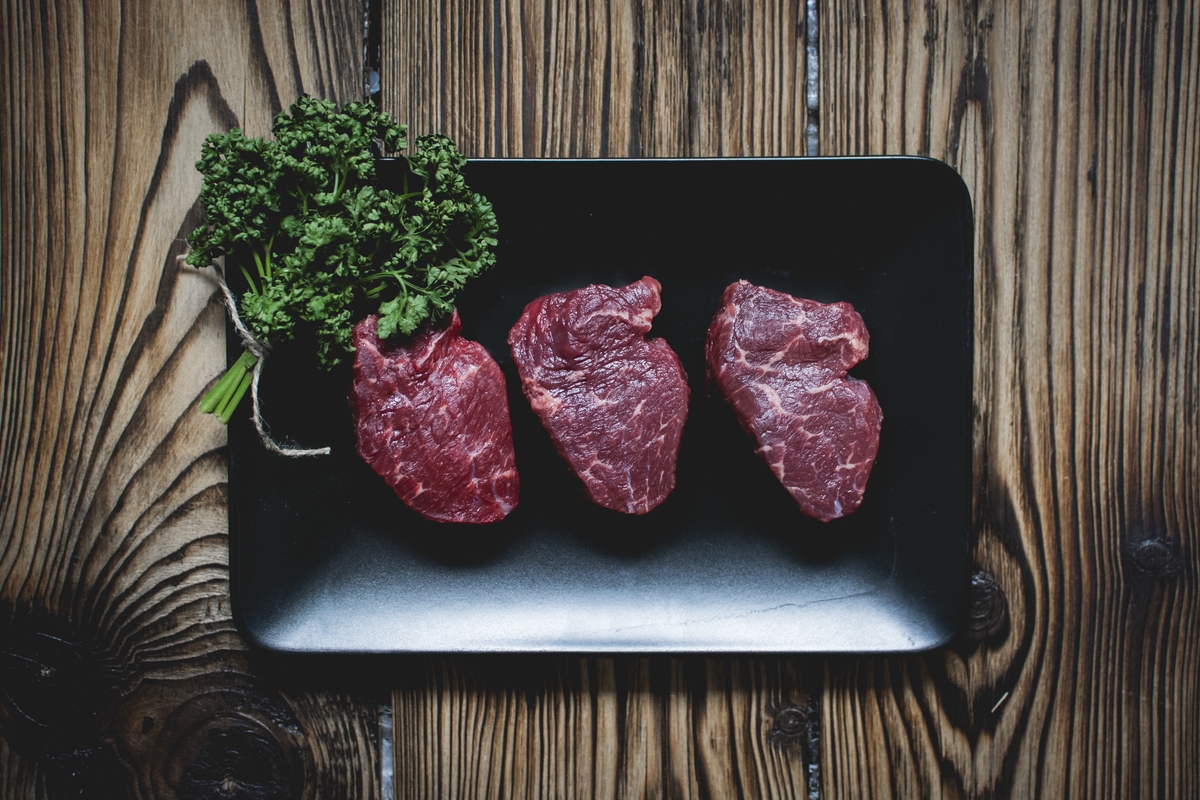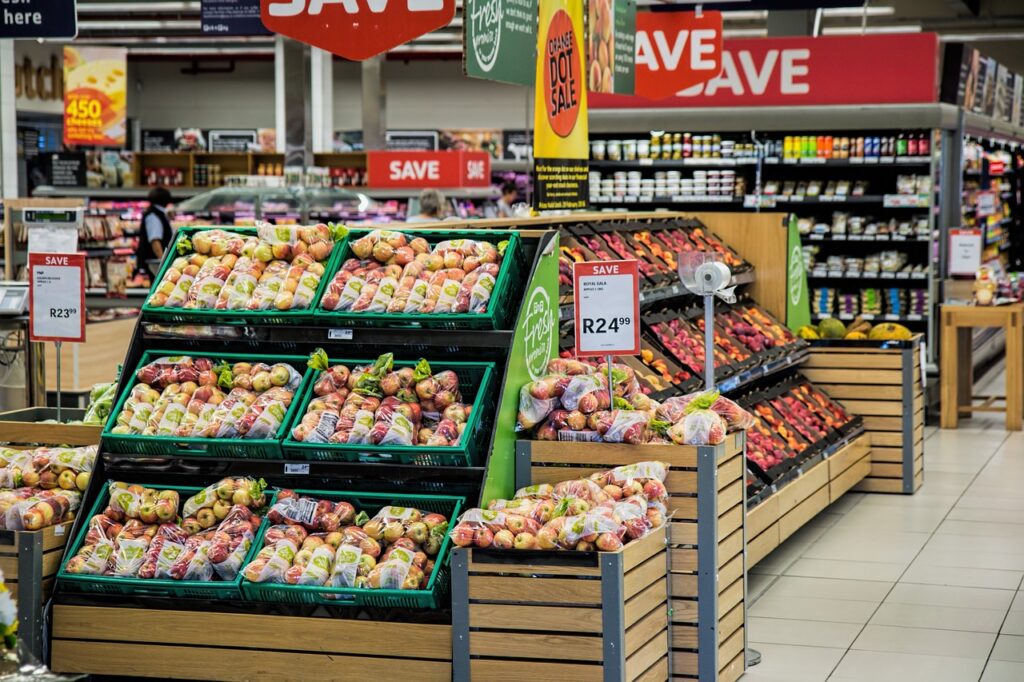Let’s be real—grocery prices are out of control. If you’ve been feeling the pinch at checkout, you’re certainly not alone in this sentiment. The rising cost of food has made feeding ourselves and our families a significant burden on the budget, a challenge many households are facing head-on.
While food inflation is expected to moderate slightly in 2025, grocery prices are still projected to rise by 0.8% this year, according to profarmer.com. This makes every dollar we spend count more than ever. But here’s the empowering news: you absolutely can cut your grocery bill without sacrificing the quality or nutrition your family deserves. It’s all about adopting smart, actionable strategies that empower you to take control of your spending.
Whether you’re feeding a bustling household or simply striving to stretch your personal budget, the good news is that there are plenty of reliable ways to make a real difference in your wallet. We’re here to share practical, attainable tips that will help you save more, stress less, and enjoy healthy, delicious meals without breaking the bank. Get ready to transform your shopping habits and watch those savings add up!
1. **Pre-Plan Your Meals & Shop Sales Strategically**One of the most powerful weapons in your grocery-saving arsenal is meticulous meal planning, especially when it’s combined with smart sale tracking. Impulse purchases are notorious for inflating grocery bills faster than you can say “organic kale.” By taking the time to decide what you’ll eat for the week, you can create a focused shopping list, ensuring you buy only what you truly need and significantly reducing food waste, which the average household wastes nearly 30% of the food they buy – akin to throwing cash in the trash.
To really supercharge your meal planning, make it a habit to browse your local grocery store’s weekly ad or flyers. Many stores offer digital coupons on their apps, providing an effortless way to see what’s on sale. Plan your meals around these discounts; if chicken thighs are a great deal, build meals like Ranch Chicken and Rice or Chicken Florentine Soup around them. This proactive approach allows you to capitalize on sales, ensuring you get the best value for your money rather than simply buying ingredients at full price.
Embrace the routine of doing a full fridge, freezer, and pantry sweep before you even start meal planning. This ensures you’re using up ingredients you already have on hand, preventing them from going bad. As the context emphasizes, “After all, reducing food waste is one of the biggest ways to save on groceries.” After inventory, create a meal plan that incorporates these existing items first, then fill in the gaps with sale items. This layered strategy is incredibly effective in both cutting costs and minimizing waste.
Read more about: Beyond the Buzz: Unpacking the Overlooked Real Costs of Nostalgic Collecting for Vintage Enthusiasts

2. **Stick to a Detailed Grocery List**Shopping without a plan is an express ticket to overspending, and retailers are masters at designing stores to encourage impulse buys. This is where a detailed grocery list becomes your steadfast companion. A well-constructed list keeps you laser-focused on your essential purchases and helps you resist the temptation of unnecessary (and often expensive) extras that weren’t on your radar when you walked in.
Before you head to the store, write a comprehensive list based on your carefully crafted meal plan. It’s a great idea to keep it on your phone so you don’t accidentally leave it on the kitchen counter. Moreover, check your pantry and fridge one last time to avoid buying duplicates. As one expert humorously notes, “Shout out to those three jars of ketchup in my fridge,” reminding us how easy it is to accumulate unneeded items.
To make your shopping trip even more efficient and prevent wandering into tempting aisles, organize your list by store sections. Grouping items like produce, dairy, and frozen foods together streamlines your path through the store. This strategic approach helps you stick to the outer aisles, where essentials like fresh produce, dairy, and proteins are typically found, effectively bypassing the inner aisles laden with processed snacks and impulse buys.
Read more about: Buckle Up for Laughs: 14 Unexpected Car Rules From 12 Famous Comedians
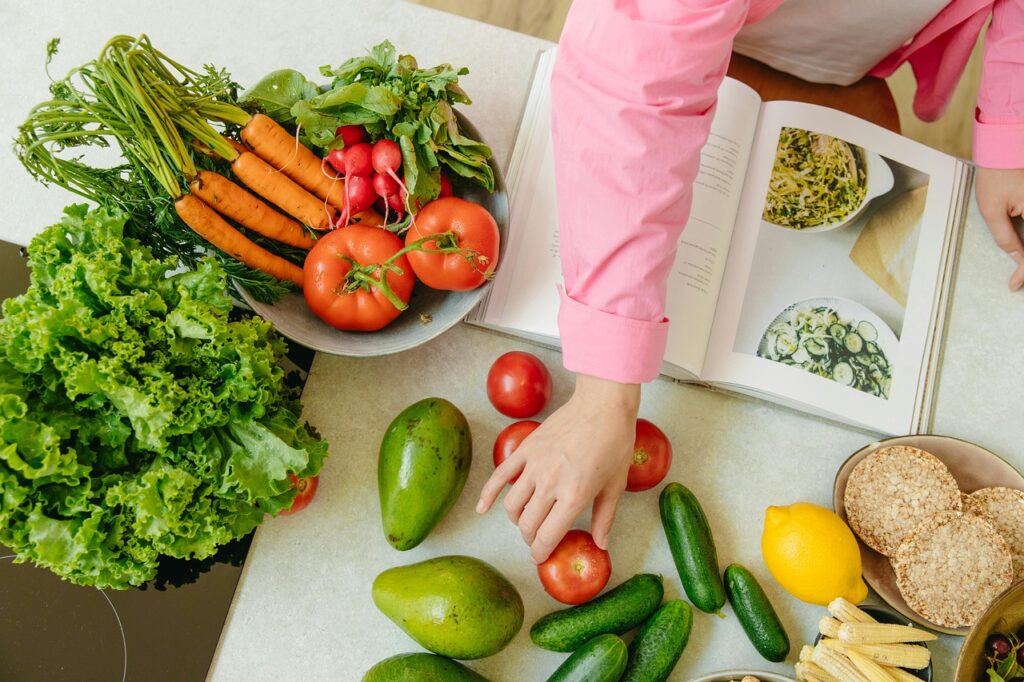
3. **Shop Your Pantry First & Master Food Waste Reduction**Before you even think about stepping foot in a grocery store, the most immediate and impactful way to save money is to “shop your pantry first.” This simple yet powerful strategy involves taking a thorough inventory of everything you already have in your fridge, freezer, and pantry. You might be genuinely surprised by the number of meals you can construct from ingredients that are simply waiting to be used.
Reducing food waste is paramount in saving money, as discarding spoiled food is literally like throwing cash away. Once you’ve surveyed your existing inventory, build your meal plan around these items. If you have extra veggies, make a stir-fry; if there’s leftover rice, transform it into fried rice. Planning “clean-out-the-fridge” meals like stir-fries, soups, or omelets is an excellent way to use up odds and ends before they spoil, preventing that disheartening experience of tossing out perfectly good food.
Effective food storage also plays a crucial role in preventing waste. Investing in quality airtight containers can significantly extend the shelf life of your produce and leftovers. Furthermore, adopting the “first in, first out” method—placing older items at the front of your fridge or pantry—ensures they are consumed before newer items, minimizing spoilage. By maximizing what you already own and implementing smart storage, you’ll spend less and feel good about your reduced environmental footprint.
Read more about: Empowering Your Plate: 14 Dietary Strategies to Significantly Lower Your Cancer Risk

4. **Embrace Store Brands & Generic Alternatives**One of the easiest and most immediate ways to see savings on your grocery bill is to make the switch to store brands and generic alternatives. Name-brand items often come with a significantly higher price tag, a cost that often covers extensive marketing and advertising rather than a superior product. As the context wisely points out, “someone has to pay for those expensive Superbowl commercials.” You’ll find that generic and store-brand products are frequently just as good as their name-brand counterparts, often costing 20-30% less.
Many store-brand items are actually manufactured by the same companies that produce the name brands. This means you could be paying extra solely for the fancy packaging, not for a difference in quality or ingredients. It’s definitely worth giving them a try; you might not even notice the difference, or you might even discover new favorites. Experiment with making the switch in areas where you don’t have strong brand loyalties.
Consider opting for generic options in various categories: pantry staples like condiments, salsa, canned goods, rice, and pasta are excellent candidates. Dairy items such as milk, cheese, and butter also often have high-quality store-brand alternatives. Even cleaning supplies and paper products can offer significant savings when you choose the generic option. Always compare ingredient lists to confirm similarity, but don’t hesitate to empower your budget by going generic where it makes sense.
Read more about: Does Charging Your Phone To 100% Ruin Your Battery? The Definitive Guide to Smartphone Battery Longevity

5. **Buy in Bulk (But Only When It Makes Sense)**Buying in bulk can be a true game-changer for your grocery budget, but it requires a strategic approach to truly save money. Warehouse stores like Costco or Sam’s Club and bulk sections in regular grocery stores can offer significant savings, but this only applies to items you genuinely use consistently and can store effectively. The key is to focus on non-perishable staples that have a long shelf life.
Prioritize bulk purchases for items like rice, pasta, beans (both canned and dry), and spices. These are products that don’t expire quickly and are used regularly in many households. You can also achieve substantial savings by purchasing meat in bulk when it’s on sale, then portioning it out and freezing it for later use. This allows you to take advantage of great deals and always have protein on hand without paying premium prices.
It’s crucial to avoid bulk purchases of items that spoil quickly, such as fresh produce, unless you have a concrete plan to use or preserve them before they go bad. That giant tub of mixed salad greens, bought with the best intentions, often ends up wilted and discarded, negating any potential savings. Always check the unit price (cost per ounce or pound) to confirm that a larger package genuinely offers a better value, rather than just a higher sticker price.
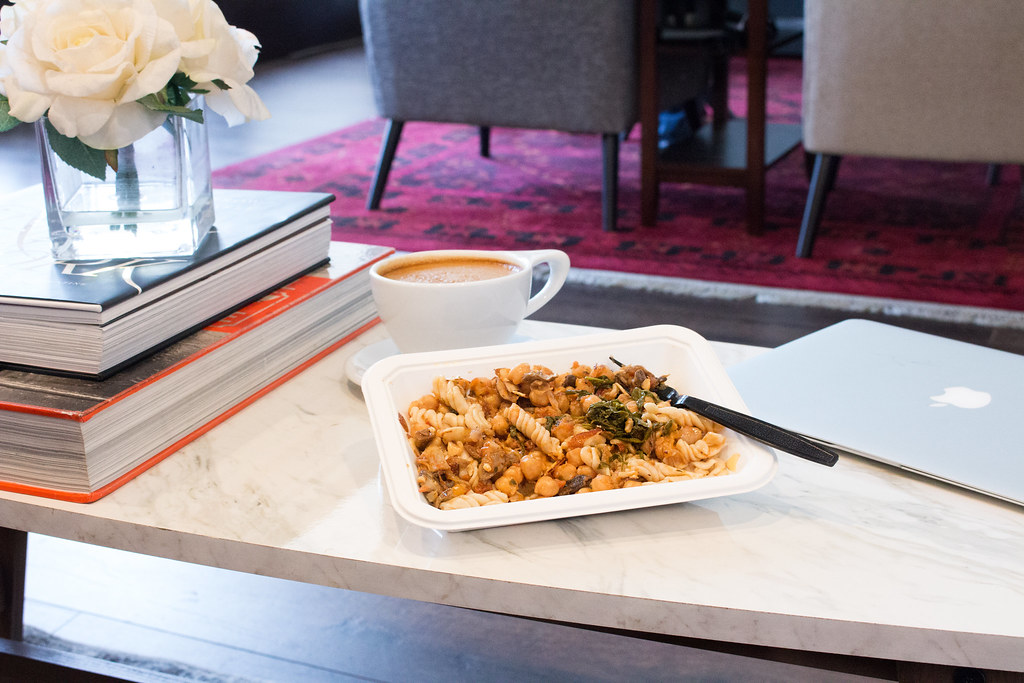
6. **Leverage Cashback & Rewards Apps + Digital Deals**In the digital age, your smartphone can be a powerful tool for slashing grocery expenses. Cashback and rewards apps offer a fantastic way to get money back on purchases you’re already making. Platforms like Ibotta, Fetch Rewards, and Rakuten provide cashback or points simply for uploading your receipts or linking your loyalty cards. It’s essentially free money, and Ibotta users, for example, can earn $20–$50 per month just by scanning receipts.
Beyond third-party apps, almost all major grocery stores now offer their own digital coupons and loyalty programs through their apps. Taking a few minutes to “clip” these digital coupons before you shop can easily save you anywhere from $5 to $20 per trip. These programs often provide exclusive discounts, personalized offers based on your shopping history, and points that can be redeemed for free groceries later on. Many stores, like Kroger, Safeway, and Target, provide weekly discounts right in their apps.
For maximum savings, adopt a strategy of combining these tools. Pair cashback apps with store loyalty programs for double the rewards. Keep an eye on store flyers and use apps like Flipp or Grocery Outlet to track weekly deals and plan your shopping trips around them. By diligently utilizing these free and user-friendly digital resources, you can add up to significant savings over time, making every grocery trip more budget-friendly.
Read more about: 15 Essential Lifehacker Tips to Score the Best Price on Your Next Car Rental
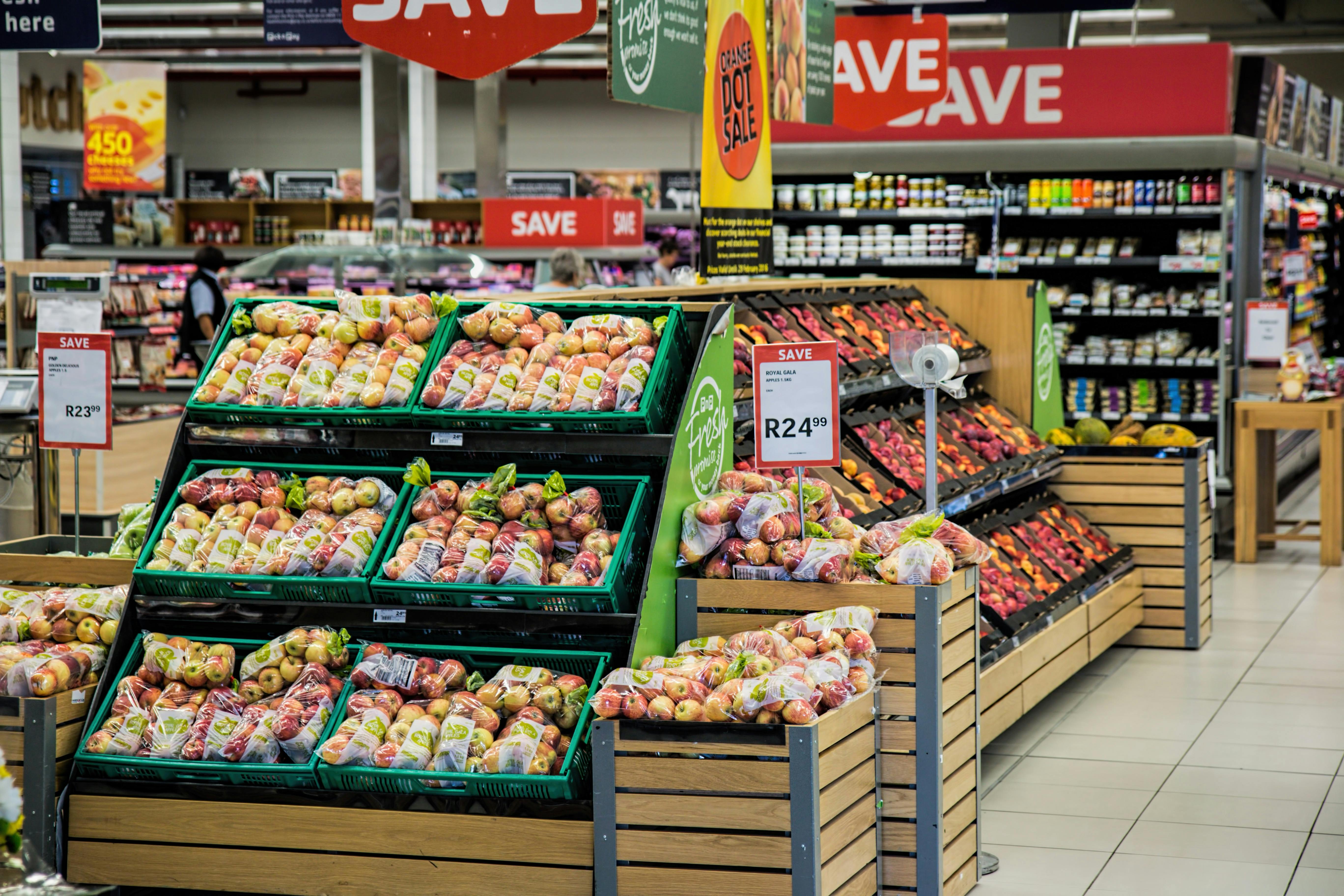
7. **Shop at Discount Grocery Stores**Beyond simply seeking out sales at your regular supermarket, an incredibly effective strategy for significant savings is to shift some of your shopping to dedicated discount grocery stores. Chains like Aldi, Lidl, and other local discount outlets are absolute treasure troves for budget-friendly finds, offering high-quality products for a fraction of the price you’d pay elsewhere. They often operate with a leaner business model, which translates directly into lower prices for consumers.
These stores frequently carry their own successful line of store brands, which, as discussed earlier, are often just as good as name brands but at a much lower cost. Checking their weekly ads is key, as they often feature special deals on produce, meat, and pantry staples that can dramatically reduce your overall grocery bill. If you haven’t explored these options yet, now is definitely the time to give them a try; you might be genuinely surprised by the quality and savings.
While discount stores are fantastic for staples and pantry items, it’s wise to be strategic about what you buy there. Some discount stores, like Aldi, also carry home goods and novelties. While these can be tempting, it’s best to avoid these aisles if your primary goal is to save on groceries and prevent impulse buys of non-essentials. Focus on the core grocery items where their value truly shines, and you’ll find yourself saving substantial amounts without feeling deprived.
Navigating the aisles with purpose, having mastered the art of smart planning and judicious shopping, is just the beginning. Now, let’s empower ourselves with even more sophisticated strategies that delve deeper into our culinary habits and budgeting psychology. These advanced tactics will not only trim your grocery bill further but also enrich your eating experience, ensuring nutritional integrity remains at the forefront of your budget-savvy kitchen.
Read more about: 6 Early Subscription Models That Revolutionized Retail: Unpacking Their Disruptive Power

8. **Buy Seasonal Produce**One of the most delightful and impactful ways to save money on groceries is by embracing the rhythm of the seasons when it comes to your produce. Out-of-season fruits and vegetables often come with a significantly higher price tag, primarily because they’re shipped from distant locations, incurring extra costs for transportation and storage. By contrast, choosing produce that is currently in season ensures you’re getting fresher items at much lower prices, a win-win for your palate and your wallet.
Cooking with produce that’s in season isn’t just about saving money; it’s also about experiencing food at its peak flavor. Fruits and vegetables taste their absolute best when they are in season, especially if they are locally grown. Next time you’re strolling through the grocery store, or even better, visiting a local farmers’ market, make a conscious effort to note what produce is in abundance and consider building your meals around those items. This approach guarantees optimal freshness and taste.
To truly maximize your savings, consider visiting farmers’ markets late in the day, right before closing time. While your selection might be slightly reduced, sellers are often keen to offer extra discounts on their remaining stock. They’d much rather sell it than pack it up and potentially have it go to waste. Moreover, when you find exceptional deals on seasonal produce, don’t hesitate to buy in bulk during its peak season. Items like blueberries, raspberries, and cherries, for instance, are often available at amazing prices.
You can then freeze, can, or preserve these extras for later enjoyment, extending your savings and allowing you to enjoy summer’s bounty well into the colder months. This strategy not only makes seasonal produce incredibly budget-friendly but also supports local farmers and helps reduce your environmental footprint, aligning your budget goals with broader community and ecological benefits. This forward-thinking approach ensures you use everything you buy, stocking your pantry for when fresh produce becomes scarce and more expensive.
Read more about: The Art of Pimping Your Ride: 15 Groundbreaking Car Customization Trends for 2025

9. **Use the Freezer Wisely**Your freezer is an invaluable asset in the quest to save on groceries, acting as a powerful tool to prevent food waste and lock in savings from great deals. Instead of letting perishable items spoil, learn to harness the power of freezing. When you spot sales on meats, bread, or even certain types of produce, stock up! You can then portion these items out and freeze them, ensuring you always have ingredients on hand without paying premium prices later.
Beyond stocking up on sale items, the freezer is your best friend for managing leftovers. How many times have you cooked a large meal only to have the last portions languish in the fridge until they’re no longer good? If you can’t finish a meal right away, simply freeze it for a quick, ready-to-go option later. This strategy means you’re not throwing away perfectly good food, effectively turning potential waste into future budget-friendly meals. Think of it as creating your own convenient, healthy “freezer meals” that save you from last-minute takeout.
To truly make the most of your freezer, a little organization goes a long way. Always label and date everything you put in there. This simple habit helps you avoid the dreaded “freezer burn” and prevents forgotten items from lingering for years, like that pre-pandemic package of ground beef you totally forgot about. By maintaining a clear inventory, you ensure that older items are used first, further minimizing waste and maximizing your investment in bulk buys and sale items.
For those who are serious about long-term savings and have the space, considering a deep freezer can be a game-changer. These appliances allow for even greater bulk purchases and the storage of more prepped meals. Investing a small amount upfront can lead to significant savings over time by enabling you to fully capitalize on sales and efficient meal preparation, setting aside plenty of food for when fresh produce isn’t in season and prices are higher.
Read more about: Unlock Top Value: Simple Secrets to Getting the Best Price on a Car Vinyl Wrap and Mastering DIY Installation

10. **Limit Pre-Packaged and Convenience Foods**While they promise to save time, pre-packaged and convenience foods often come with a hefty price tag that belies their true value, and frankly, they’re not usually the healthiest option either. Items like pre-cut fruit, shredded cheese, individually wrapped snacks, and ready-made meals cost significantly more than their whole, unprocessed counterparts. The convenience factor is built into the price, meaning you’re paying a premium for someone else to do a few minutes of prep work.
Embracing the habit of cooking from scratch is a cornerstone of saving money and maintaining nutritional control. Not only is it significantly cheaper, but it also empowers you to control the quality of ingredients in your meals, avoiding unnecessary additives and preservatives. Instead of buying store-bought salad dressings, spice blends, or marinades, try making your own; it’s surprisingly easy, healthier, and far more affordable. The same goes for homemade soups and chilis, which are a world apart from their canned versions.
Consider the simple act of preparing your own vegetables. Skipping pre-chopped, shrink-wrapped veggies and doing the slicing and dicing yourself at home will save you money and reduce plastic waste. For instance, slicing or shredding your own block of cheese not only offers significant cost savings but also helps you avoid the extra chemicals used to prevent caking and mold growth in pre-shredded varieties. Even basic pantry staples like tuna in a can are more economical than single-serving pouches.
Start with small, manageable swaps that fit into your routine. Instead of grabbing pre-packaged granola bars, try making your own healthy snack recipes to bring to work. Invest in reusable containers to portion out snacks like crackers, nuts, or granola from larger, more economical packages. These seemingly small changes add up, allowing you to stretch whole food ingredients further and use them in multiple meals, keeping your expenses down and your diet healthier.
Read more about: Grabbing Lunch? 14 Sandwich Shops We’re Definitely Bypassing for Freshness and Flavor.
11. **Cut Back on Meat (Without Sacrificing Protein)**For many households, meat is often the single most expensive item in the grocery cart, making it a prime target for budget-conscious savings. Incorporating more plant-based meals into your weekly plan can dramatically reduce your grocery bill without compromising on essential protein or flavor. You don’t have to go fully vegetarian; even just one or two meatless meals per week can make a significant difference to your budget.
There’s a wealth of inexpensive yet protein-heavy options available that are both delicious and nutritious. Think about making beans, lentils, tofu, or eggs the stars of your meals. A hearty lentil soup, a flavorful bean chili, or a versatile tofu stir-fry can provide all the protein you need at a fraction of the cost of meat. Eggs, too, are an incredibly versatile and affordable protein source, perfect for frittatas, omelets, or as additions to salads.
Beyond traditional plant-based proteins, hearty vegetables can take center stage in your meals, shifting from supporting cast to main event. Cauliflower, spaghetti squash, or even humble potatoes can form the delicious and satisfying base of a meal. For those who enjoy pasta, a simple dish with marinara sauce, an array of fresh veggies, or even just garlic, herbs, and olive oil can be a delightful and budget-friendly dinner, especially when paired with a vibrant side salad.
Don’t be hesitant to experiment; even avid meat-eaters will find plenty to enjoy in the world of vegetarian cuisine. Canned beans, dried lentils, and tofu offer much cheaper protein sources than meat, making them excellent choices when budget is a huge factor. These dietary shifts are not about deprivation but about smart, creative cooking that saves money and broadens your culinary horizons.
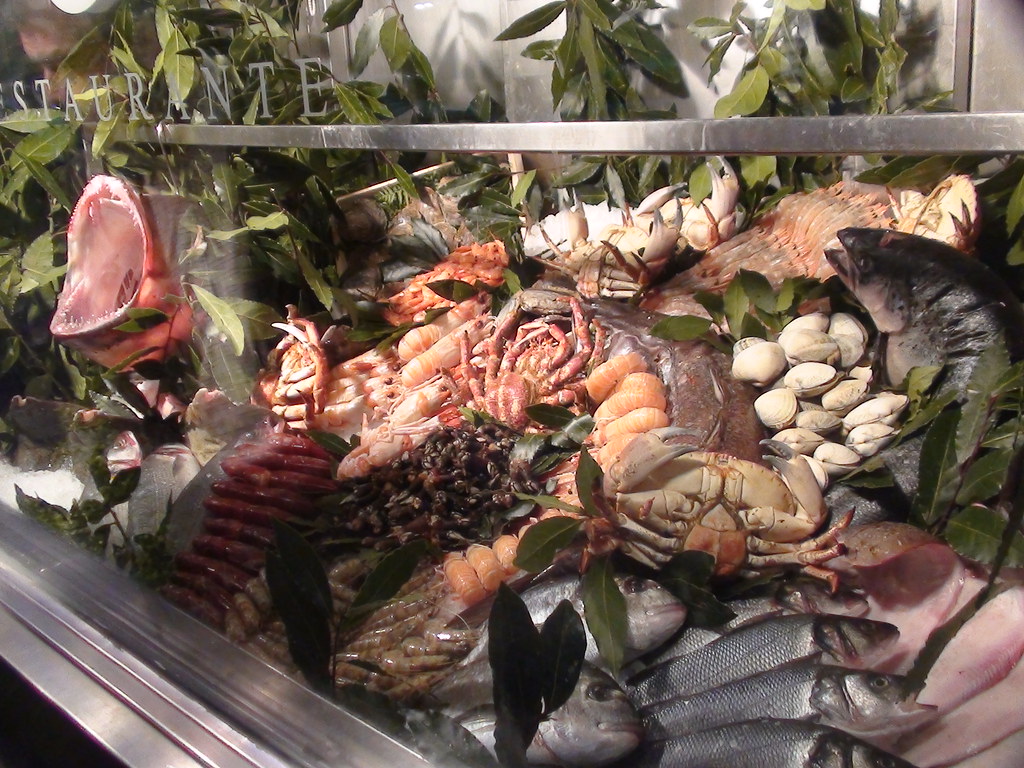
12. **Don’t Shop When You’re Hungry**This tip might sound incredibly simple, almost too obvious, yet its impact on your grocery bill can be profound. Shopping on an empty stomach is a surefire way to increase your spending, leading to more impulse buys—and these unplanned purchases are almost always the most expensive items. My bank account can attest to this reality; the effect of a rumbling stomach on shopping decisions is a real and costly phenomenon.
The solution is straightforward: eat a meal or a satisfying snack before you head to the grocery store. By ensuring you’re full, you’ll be less tempted to stray from your carefully crafted list and fall victim to the alluring displays of convenience foods and snacks. When your hunger isn’t calling the shots, your rational brain can focus on purchasing only the essentials, leading to a much more controlled and budget-friendly shopping trip.
This strategy isn’t just about saving money; it can also be a quiet win for your waistline. When you’re starving, those pricey, often less-healthy convenience foods become incredibly appealing. By avoiding shopping while hungry, you naturally bypass many of these tempting, but often nutritionally questionable, items. Try it for yourself and observe the difference: you’ll likely find significantly less non-essential food in your cart once you get to the checkout.
Make it a habit to schedule your grocery runs right after breakfast or dinner. This mindful approach ensures that your shopping decisions are driven by your meal plan and budget, not by immediate cravings. It’s an easy, yet remarkably effective, piece of “smart shopping psychology” that empowers you to stick to your budget and avoid overspending on items you genuinely don’t need.
Read more about: The Enduring Romance of the Road: Why Classic Cars and Roadside Diners Share an Unbreakable Bond

13. **Check Unit Prices, Not Just Sticker Prices**To truly become a savvy grocery saver, you need to look beyond the large, inviting sticker price and train your eyes on the unit price. This often smaller print on the price label tells you the cost per ounce, pound, or other standard unit of measure for an item. It’s a crucial detail that empowers you to discern the true value of different package sizes and brands, as bigger packages aren’t always the best deal, despite what logic might suggest.
This seemingly minor detail is incredibly useful in figuring out the most economical purchase. Sometimes, a larger package may appear to be a better deal, but when you compare its unit price to a smaller version or a different brand, you might find that the “bargain” isn’t what it seems. Conversely, you’ll discover instances where purchasing a larger package actually does save you money in the long run, as the cost per unit is significantly lower.
When considering bulk purchases, always refer to the unit price to confirm that a larger package genuinely offers a better value. It’s the definitive metric for smart comparison shopping. However, a word of caution: when buying larger quantities based on unit price savings, always keep the expiration date in mind. There’s no saving if your family can’t use up everything before it expires, turning a potential saving into wasted food and money.
By making the unit price comparison a regular part of your shopping routine, you equip yourself with the knowledge to make informed decisions. This small but powerful habit allows you to consistently find the best value for your money across various product categories, ensuring every dollar spent goes further towards nutritious and affordable meals. It’s a simple shift in focus that yields substantial savings over time.
Read more about: Navigating Your First Electric Vehicle Purchase: Essential Mistakes to Avoid for New Owners

14. **Set a Grocery Budget and Stick to It**Ultimately, the most comprehensive and empowering strategy for controlling your grocery spending is to set a clear budget and commit to sticking to it. Without a defined financial limit, even the most diligent shopper can unknowingly overspend. Knowing your limit transforms your shopping experience, encouraging smarter choices and preventing the accumulation of unnecessary items. It’s the anchor that holds all other saving strategies together.
For those who find self-control a challenge in the grocery store environment, an incredibly effective tactic is to shop with cash, much like in the olden days. Before you head out, calculate your budget and only bring the exact amount of cash you’re willing to spend. This tangible limit creates an immediate boundary, making it far easier to stick to your budget when you literally don’t have a choice to spend more. It might feel a little scary at first, but the results in your bank balance can be wonderfully reassuring.
Understanding what constitutes a reasonable grocery budget can also be a guiding light. While it depends on factors like household size and location, guidelines exist to help. According to the USDA’s 2025 guidelines, a budget-conscious food plan for a single adult is estimated to be around $275–$325 per month. For a family of four striving for a tight budget, the range is $975–$1,150, while a moderate plan could be $1,250–$1,500. These figures provide a helpful benchmark to assess and establish your personal grocery spending limits.
Whether you track your spending with a budgeting app, an old-school envelope system, or simply by bringing cash, the discipline of a set budget is paramount. It gives you an overarching framework to make wise choices, from planning meals around sales to choosing store brands and utilizing leftovers. By actively managing your grocery spending, you take control of a significant household expense, leading to greater financial stability and less stress at the checkout.
Read more about: Buyers Beware: 13 Car Mods That Are a Total Waste of Money and Could Land You in Trouble
In Summary: Saving on groceries doesn’t have to mean sacrificing quality, health, or convenience. It’s about being proactive, informed, and intentional with every shopping trip and meal preparation. By adopting these practical, attainable strategies—from expertly planning your meals and embracing discount stores to mastering food preservation and sticking to a firm budget—you can significantly reduce your grocery bill and free up that extra cash for what truly matters to you. Take control of your food budget today, and watch your savings, and your confidence in the kitchen, grow week after week! You absolutely can eat well without going broke.

